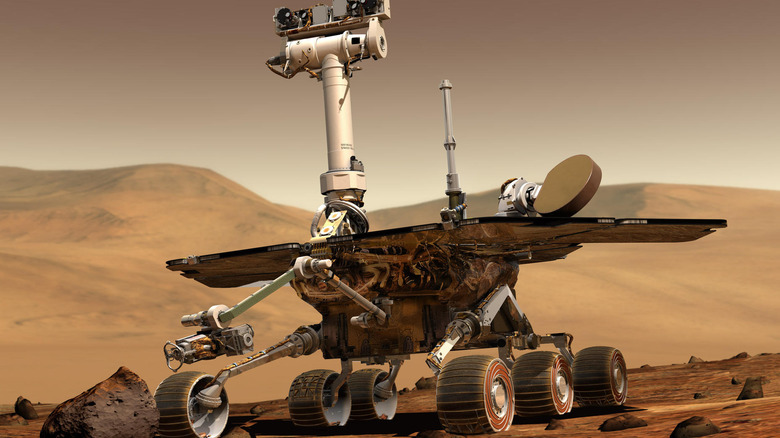How Two 20-Year-Old Rovers Changed Mars Science Forever
Before Curiosity and Perseverance, two now-defunct NASA rovers paved the way for the machines that explore the red planet today: Spirit and Opportunity. While Curiosity and Perseverance are each roughly the size of a small car and have sophisticated instruments like spectrographs with lasers to break down materials for analysis on board, Spirit and Opportunity were smaller and simpler. Still, they were at the forefront of the last few decades of exploration of Mars, and the two recently celebrated their 20th anniversary.
The pair of rovers touched down on the surface of Mars in January 2004, positioned on opposite sides of the planet to maximize the amount of exploration that could be done. They were a type of rover called Mars Exploration Rovers, weighing it at around 400 lbs and standing 1.5 meters tall.
They were designed to act as geologists, hunting down clues to the history of water on Mars. And they found that not only was there once liquid water on the planet — a lot of it — but also that the planet could potentially have supported microbial life.
"Our twin rovers were the first to prove a wet, early Mars once existed," said former Spirit and Opportunity scientist Matt Golombek of NASA's Jet Propulsion Laboratory. "They paved the way for learning even more about the Red Planet's past with larger rovers like Curiosity and Perseverance."
Why water on Mars matters
Mars today is a dry, inhospitable place. There is hardly any liquid water on the surface, though there is water ice particularly around the poles. But scientists know that liquid water is a key ingredient for life as we know it to develop.
Scientists are pretty certain that there is nothing alive on Mars today. But they have long speculated about whether there could have been life, most likely microbial, on Mars millions of years ago. To find out if that were possible, they needed more information about whether Mars ever had surface water, and if so, for how long.
Spirit and Opportunity revolutionized Mars science by finding small spheres nicknamed "blueberries" on the planet's surface. These were clumps of a mineral called hematite, which forms in acidic water, showing that there must once have been liquid water on the surface. The pair also discovered soil rich in silica which must have formed in water, further providing evidence of Mars's watery past.
Even now, scientists are still debating exactly how long that water stuck around for, but it is thought that Mars had plentiful liquid water up until around 4 billion years ago. That finding was the basis for sending the Perseverance rover to the Jezero crater on Mars, in order to look for evidence that there could once have been microscopic life on the planet. The crater is the site of an ancient lake, making it potentially ideal conditions for life to have thrived billions of years ago.
A long-lived rover
If you've heard of Opportunity, it might be because it became famous for surviving for so long. It and Spirit were designed to last just 90 days. Spirit lasted for six years, despite damage to its front right wheel. Engineers figured out that they could drive the rover backwards to keep making use of it to explore.
The truly incredible success story, though, was Opportunity, which lasted for an astonishing 15 years. In that time, it covered nearly 30 miles, which was the greatest distance driven on another planet. Previous rovers hadn't covered anywhere near that much distance.
"This was a paradigm shift no one was expecting," said former project manager John Callas of JPL. "The distance and time scale we covered were a leap in scope that is truly historic."
The rovers not only made incredible scientific breakthroughs in the study of Mars, but they also inspired a whole generation of Mars scientists, like Abigail Fraeman, who was invited to watch landing of Opportunity as a high school student and years later become a scientist for the Curiosity rover.
"The people who kept our twin rovers running for all those years are an extraordinary group, and it's remarkable how many have made exploring Mars their career," Fraeman said. "I feel so lucky I get to work with them every day while we continue to venture into places no human has ever seen in our attempt to answer some of the biggest questions."

